Do you have a question about the MSI Z270 GAMING M7 and is the answer not in the manual?
Lists all components included in the motherboard box, such as motherboard, I/O shield, cables, and manuals.
Guidelines for preventing electrostatic discharge and proper handling of motherboard components.
Covers power, humidity, electrical safety, and environmental conditions for safe operation.
Lists essential tools and components required for PC assembly, including CPU, memory, and chassis.
Step-by-step visual guide for installing the CPU onto the motherboard socket.
Instructions for correctly inserting DDR4 memory modules into the DIMM slots.
Guide to connecting front panel connectors like power switch, reset, and LEDs to the motherboard header.
Illustrates the process of installing the motherboard into the computer chassis and securing it.
Steps for connecting SATA drives, including data and power cables, to the motherboard and PSU.
Procedure for installing a graphics card into a PCIe slot and securing it.
Diagram showing how to connect essential peripherals like keyboard, mouse, and monitor to the rear I/O panel.
Illustrates how to connect the ATX and CPU power supply connectors to the motherboard.
Steps to safely connect the power cord and turn on the computer for the first time.
Details on supported CPU generations, Z270 chipset features, and DDR4 memory specifications.
Information on PCIe expansion slots and onboard graphics capabilities (HDMI, DisplayPort).
Specs for SATA, U.2, M.2 slots, and Intel Optane Memory support.
Details on RAID configurations, USB port types (Gen1, Gen2), and Multi-GPU technologies (SLI, CrossFire).
Specifications for audio codec, LAN controller, and a list of back panel connectors.
Lists internal connectors, buttons, I/O controller, hardware monitor, form factor, and BIOS features.
Lists provided software, drivers, and highlights special motherboard features.
Visual representation of how key components like CPU, memory, and I/O are interconnected via buses.
Explanation of I/O panel layout, LAN port LED status codes, and audio port connection configurations.
Details on the Clear CMOS button function and the BIOS Flashback+ port usage.
Guide to using the Realtek HD Audio Manager for audio settings, enhancements, and jack detection.
CPU socket installation and DIMM slot configuration.
Information on PCIe, U.2, M.2, and SATA connectors for system expansion and storage.
Guides for connecting power, USB ports, and front panel headers for case functions.
Explanation of fan connectors, buttons, jumpers, and onboard status LEDs for system monitoring.
Methods to access the BIOS setup utility, including using the DEL or F11 key, or the MSI FAST BOOT application.
Overview of EZ Mode for basic system configuration, including GAME BOOST, XMP, and language settings.
Introduction to Advanced Mode for detailed BIOS settings, including menu selection and overview.
Configuration of system date/time, SATA/M.2 device info, and PCI subsystem settings.
Configuration of boot device priority, full screen logo display, GO2BIOS, and boot mode select (Legacy/UEFI).
Settings for administrator/user passwords, password checks, and Trusted Platform Module (TPM) configuration.
Options for discarding changes, saving changes, restoring defaults, and boot device override.
Enabling OC modes and adjusting CPU ratio, frequency, and related offsets for performance tuning.
Configuration of CPU Base Clock (BCLK) and detailed clockgen features for overclocking.
Settings for dynamic BCLK adjustments, including threshold, search modes, and amplitude for overclocking.
Options for memory compatibility/performance tuning (Memory Try It!) and memory fast boot settings.
Configuration of CPU/GT voltage limits, over-voltage/current protection, and VRM temperature monitoring.
Settings for DRAM voltage limits, over-current protection, and VRM temperature monitoring.
Settings for CPU features like Hyper-Threading, core control, virtualization, and C-States.
Details on EIST, Intel Turbo Boost, and power limit settings for CPU performance tuning.
Step-by-step guide for updating the motherboard BIOS using the M-FLASH utility and a USB drive.
Instructions for managing overclocking profiles, including setting names, saving, loading, and clearing profiles.
Tools for managing fan speeds (PWM/DC modes) and monitoring system voltages and temperatures.
Steps for installing Windows OS, drivers, and essential utilities.
Guide to MSI Command Center for system tuning and Live Update 6 for driver/BIOS updates.
Creating Windows installation media and software RAID arrays with MSI utilities.
Features for in-game streaming overlays and performance tuning with Gaming App.
Controlling motherboard LEDs and optimizing display settings for eye comfort.
Customizing hotkeys and mouse functions for enhanced gaming control.
System performance modes via X-BOOST and virtual RAM disk creation.
Network management with Killer Control Center and audio enhancements with Nahimic 2.
Guide for gameplay recording and live streaming with XSplit Gamecaster.
Configuring SteelSeries peripherals and device settings.
Using Intel XTU for system tuning, testing, and monitoring.
Utility for gathering detailed system hardware information.
Overview of RAID types and accessing the Intel Rapid Storage Technology Option ROM.
Step-by-step guides for creating and deleting RAID volumes.
Managing RAID recovery modes and procedures for replacing failed hard drives.
Creating and removing RAID volumes specifically for M.2 PCIe SSDs.
Troubleshooting steps for systems that do not power on or display a signal.
Resolving problems with boot failure, audio, network, and USB devices.
FCC, CE, C-Tick compliance and battery/chemical substance information.
WEEE directive, country-specific regulations, and hazardous substance content.
Lists all components included in the motherboard box, such as motherboard, I/O shield, cables, and manuals.
Guidelines for preventing electrostatic discharge and proper handling of motherboard components.
Covers power, humidity, electrical safety, and environmental conditions for safe operation.
Lists essential tools and components required for PC assembly, including CPU, memory, and chassis.
Step-by-step visual guide for installing the CPU onto the motherboard socket.
Instructions for correctly inserting DDR4 memory modules into the DIMM slots.
Guide to connecting front panel connectors like power switch, reset, and LEDs to the motherboard header.
Illustrates the process of installing the motherboard into the computer chassis and securing it.
Steps for connecting SATA drives, including data and power cables, to the motherboard and PSU.
Procedure for installing a graphics card into a PCIe slot and securing it.
Diagram showing how to connect essential peripherals like keyboard, mouse, and monitor to the rear I/O panel.
Illustrates how to connect the ATX and CPU power supply connectors to the motherboard.
Steps to safely connect the power cord and turn on the computer for the first time.
Details on supported CPU generations, Z270 chipset features, and DDR4 memory specifications.
Information on PCIe expansion slots and onboard graphics capabilities (HDMI, DisplayPort).
Specs for SATA, U.2, M.2 slots, and Intel Optane Memory support.
Details on RAID configurations, USB port types (Gen1, Gen2), and Multi-GPU technologies (SLI, CrossFire).
Specifications for audio codec, LAN controller, and a list of back panel connectors.
Lists internal connectors, buttons, I/O controller, hardware monitor, form factor, and BIOS features.
Lists provided software, drivers, and highlights special motherboard features.
Visual representation of how key components like CPU, memory, and I/O are interconnected via buses.
Explanation of I/O panel layout, LAN port LED status codes, and audio port connection configurations.
Details on the Clear CMOS button function and the BIOS Flashback+ port usage.
Guide to using the Realtek HD Audio Manager for audio settings, enhancements, and jack detection.
CPU socket installation and DIMM slot configuration.
Information on PCIe, U.2, M.2, and SATA connectors for system expansion and storage.
Guides for connecting power, USB ports, and front panel headers for case functions.
Explanation of fan connectors, buttons, jumpers, and onboard status LEDs for system monitoring.
Methods to access the BIOS setup utility, including using the DEL or F11 key, or the MSI FAST BOOT application.
Overview of EZ Mode for basic system configuration, including GAME BOOST, XMP, and language settings.
Introduction to Advanced Mode for detailed BIOS settings, including menu selection and overview.
Configuration of system date/time, SATA/M.2 device info, and PCI subsystem settings.
Configuration of boot device priority, full screen logo display, GO2BIOS, and boot mode select (Legacy/UEFI).
Settings for administrator/user passwords, password checks, and Trusted Platform Module (TPM) configuration.
Options for discarding changes, saving changes, restoring defaults, and boot device override.
Enabling OC modes and adjusting CPU ratio, frequency, and related offsets for performance tuning.
Configuration of CPU Base Clock (BCLK) and detailed clockgen features for overclocking.
Settings for dynamic BCLK adjustments, including threshold, search modes, and amplitude for overclocking.
Options for memory compatibility/performance tuning (Memory Try It!) and memory fast boot settings.
Configuration of CPU/GT voltage limits, over-voltage/current protection, and VRM temperature monitoring.
Settings for DRAM voltage limits, over-current protection, and VRM temperature monitoring.
Settings for CPU features like Hyper-Threading, core control, virtualization, and C-States.
Details on EIST, Intel Turbo Boost, and power limit settings for CPU performance tuning.
Step-by-step guide for updating the motherboard BIOS using the M-FLASH utility and a USB drive.
Instructions for managing overclocking profiles, including setting names, saving, loading, and clearing profiles.
Tools for managing fan speeds (PWM/DC modes) and monitoring system voltages and temperatures.
Steps for installing Windows OS, drivers, and essential utilities.
Guide to MSI Command Center for system tuning and Live Update 6 for driver/BIOS updates.
Creating Windows installation media and software RAID arrays with MSI utilities.
Features for in-game streaming overlays and performance tuning with Gaming App.
Controlling motherboard LEDs and optimizing display settings for eye comfort.
Customizing hotkeys and mouse functions for enhanced gaming control.
System performance modes via X-BOOST and virtual RAM disk creation.
Network management with Killer Control Center and audio enhancements with Nahimic 2.
Guide for gameplay recording and live streaming with XSplit Gamecaster.
Configuring SteelSeries peripherals and device settings.
Using Intel XTU for system tuning, testing, and monitoring.
Utility for gathering detailed system hardware information.
Overview of RAID types and accessing the Intel Rapid Storage Technology Option ROM.
Step-by-step guides for creating and deleting RAID volumes.
Managing RAID recovery modes and procedures for replacing failed hard drives.
Creating and removing RAID volumes specifically for M.2 PCIe SSDs.
Troubleshooting steps for systems that do not power on or display a signal.
Resolving problems with boot failure, audio, network, and USB devices.
FCC, CE, C-Tick compliance and battery/chemical substance information.
WEEE directive, country-specific regulations, and hazardous substance content.
| Brand | MSI |
|---|---|
| Model | Z270 GAMING M7 |
| Category | Motherboard |
| Language | English |

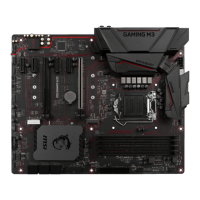

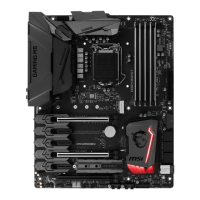

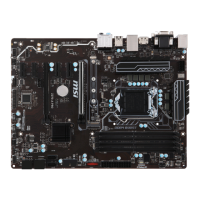
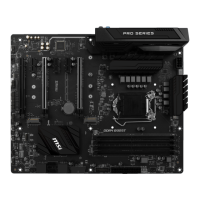
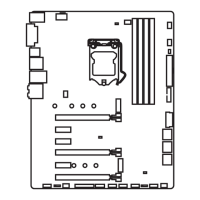

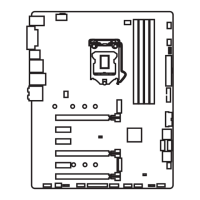

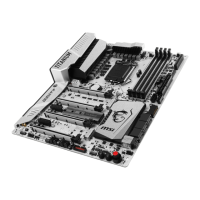
